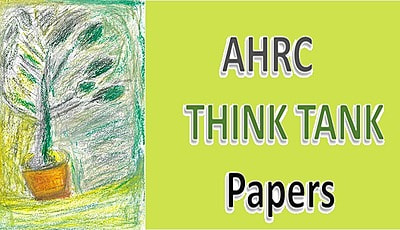INDIA: Confessions and blaming will not save 30,000 children destined to die this year
Mr. Anoop Mishra, Madhya Pradesh state Minister of Public Health and Family Welfare said in the state legislative assembly on 8 March that 30,000 children under the age of five die of malnutrition every year in the state. The shocking admission by the minister about the state government’s criminal neglect in addressing the need of the citizens is contrary to its known practice of denial about the pitiable affairs in the state, particularly concerning health and family welfare.
Though the minister’s statement could be considered as an icebreaker, for all practical purposes, it can only be viewed as a belated attempt to accept the fact, but to consciously deny responsibility. This is evident from the farcical explanation offered by the minister for the high infant mortality rate in the state. The minister’s attempt is to put the blame upon the mothers for their children’s poor health and eventual death.
The minister attributed child malnourishment to: 1. early marriage of girls; 2. pregnancy immediately after marriage; 3. newly born children being underweight; 4. want of complete vaccination; 5. mothers not providing breast-feeding to children up to six months; 6. not providing supplementary food to children in time; and 7. infections and poor economic conditions. The minister however did not explain the source of this information and what is the scientific basis for this opinion.
The government’s lack of seriousness on the issue is highlighted in the minister’s approach in dealing with the situation by merely deciding to open 25 additional nutritional rehabilitation centres adding to the existing 200 centres.
Over the years, government and non-government studies have shown that the infant mortality rate in Madhya Pradesh is much higher than what has been admitted by the government. For instance the central government sponsored National Family Health Survey (NFHS-3) has repeatedly held that an estimated 60 percent of the state’s children are malnourished. The state administration however has been denying this data over the past several years. The NFHS-3 is conducted by the International Institute for Population Sciences (IIPS) in association with number of grass-roots level organisations since 1992 on assignment from the Government of India.
In this context it is not surprising that out of the eight causes narrated by the minister that results in child malnutrition and infant deaths, four (1, 2, 5, and 6), places the blame upon the mother. By this exercise the Minister’s attempt is to avoid discussions on the root causes of child malnutrition and infant mortality that will invariably place the state administration in the dock.
In addition, the state administration does not have any form of credible data to deal with the problem. Different state entities have inconsistent and mutually contradicting data concerning infant mortality and malnutrition.
For instance according to the Health Department there is no infant deaths reported in Dhar (from April 2005 to September 2008) and Chindwara districts (from April 2006 to September 2008). Whereas the Monthly Progress Report of the Department of Women and Child Development claims that 560 infants died in both these districts between November 2007 and May 2008.
For last four years, Satna, Chhatarpur, Balaghat, Shivpuri, Guna, Rewa, Shahdol and Sidhi districts are reportedly highly affected by food and health insecurity, that has resulted in child malnutrition and mortality. Among them, the child malnutrition and deprivation of right to food in Rewa and Sidhi districts have been reported by the Asian Human Rights Commission (AHRC). For further details on these cases please see: HAC-003-2010 for Jhabua district; HAU-007-2009 and HAC-007-2009 for Rewa district; HAC-009-2009 for Sidhi district; and HAC-003-2009 for Khandwa district.
As each case proves, the families of the malnourished children are mostly landless tribal living in rural areas. They do not have regular source of income to feed their children. In addition, the NFHS-3 survey found that of 57.7 percent of women in the state were anaemic. It is shame that the minister however would still hold the undernourished parents responsible for their child’s death. It appears that the Minister expects that the landless parents deprived of any stable source of income to provide their children with supplementary food. The commonsense that the malnutrition of the parents hampers their ability to guarantee their childrens food security apparently is lacking with the Minister and the department that he leads spending tax payers’ money.
Most of the malnourished children reported by the AHRC were not registered at the Anganwadi Centre (AWC, child care centre). This means that those children are not officially recognised as undernourished by any of the government agencies.
The mothers have not received proper information and lacks knowledge about the specific nutritional needs of their children. This is a legally binding international human rights law obligation upon the government under Article 11 (2) of the International Covenant on Economic, Social and Cultural rights (ICESCR) and the Article 24 (2) e. of the International Convention on the Rights of the Child (CRC). India has ratified both these conventions and hold high prestige as a state that has accepted the Conventions’ legal mandate in international forums. Thus far the AWCs have failed to play their role as a bridge between the government and the people concerning child care.
A 2009 report titled “Moribund ICDS” on Madhya Pradesh states that 89 percent of the AWCs surveyed for the report did not possess any medicine kit and were therefore unable to provide medical relief to the children. As a result, the NHFS-3 found that only 31.5 percent of the children from 0 to 71 months in Madhya Pradesh have received health check-up in an AWC and only 37.8 percent of them had received immunisation.
While the government makes an excuse on the lack of resources such as budget or manpower, the proportion of budgetary allocation to health out of the total state expenditure has been decreasing every year since 2000, dropping from 5.1 percent to 3.9 percent in the past year. It is a sad irony that while the country projects itself as to becoming a developed nation within the next few years through dramatic economic growth, its proportion of budgetary allocation for the citizens’ health is far less than any developed country.
The case of Sidhi district specifically reflects that the budget for health service accounts for merely 2.4 percent out of total state budget. While the child malnutrition has been increasing for last five years, not a single Public Health Centre has been built in the district during this period. 1,659 out of 4,708 posts of medical officers are left vacant and 1,098 posts of Auxiliary Nursing Mothers are yet to be filled.
Similar anomalies exist in other government programmes. For the Reproductive and Child Health Programme that aimed at reducing infant and maternal mortality, the government made a budgetary provision of INR 650 millions (USD 14 millions) between 2005 and 2010. Only INR 379.6 millions (USD 8.2 millions) have been spent from this budget so far. The unspent money had to be thus returned at the project period.
The problems underlying child nutrition are so numerous and complex that the government’s response should not limit its scope to any single aspect of the issue. The opening of 25 Nutrition Rehabilitation Centres may provide short-term relief to local undernourished children but will not address the root causes of the problem.
Most of the children whose right of food is violated belong to landless families, who are deprived of any regular source of income. In many cases, parents work as migrant workers and earn extremely low wages insufficient to feed the family. Therefore, the government must take broader measures to introduce land reforms in Madhya Pradesh and promote developmental projects favouring local employment opportunities notably through investment in local agricultural infrastructures. Feudalism, a wealth source for most politicians in the state must end.
Addressing the problem of child malnutrition would therefore require strong coordinated policies between the concerned ministries such as the Health and Family Welfare, the Women and Child Development, the Agriculture and the Rural Development, but it remains a remote possibility.



